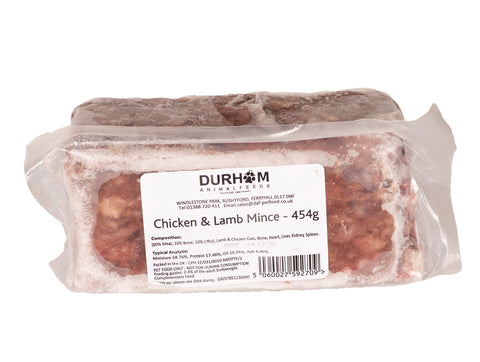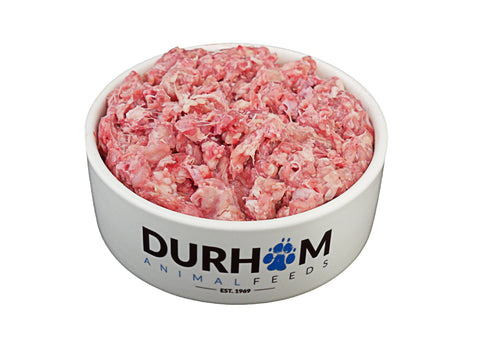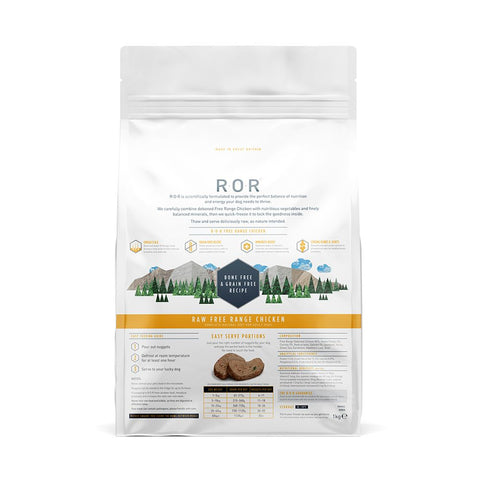Fleas & Worms – Nasty Critters That We CAN Control

Everywhere you go with your dog there is the possibility of them picking up a few unwanted friends and bringing them home. It’s really important that you take preventative steps to keep your pet and home healthy!
Sure, but who am I actually up against?
Well, there are over 60 species of fleas to be found in the UK but only a few will be found on your dog and cat, the two main culprits being Ctenocephalides canis and Ctenocephalides felis (dog and cat flea).
The life cycle of a flea goes through four stages: egg; larvae; pupae and adult. The cycle can last from 15 days to 250 days depending on the activity in that area; you can move in to a property that’s been empty for 7 months and your heat, vibrations from moving around and carbon dioxide you expel as you breathe will activate the pupae into hatching.
Adult female fleas can lay up to 500 eggs in a lifetime, which are non-adhesive and live deep in your carpets and furnishings, feeding on organic debris (our dead hair and skin), the larvae will then pupate. 95% of your flea population lives in the home environment and only 5% on your pet, which is why it is essential to treat your home as well as them.
Ugh, I don’t want them! How do I prevent an infestation?
To protect your dog/cat and your home it is best to regularly treat them with a continual flea killing ‘Spot On’ such as Frontline, Bob Martin’s: ‘Flea Clear’ or ‘Double Action’.
To do this, begin by weighing your pet. (We have scales in store, or alternatively, you can weigh yourself, then both yourself and the pet, and subtract the two values. The difference in weight will be your pet’s weight!). Once you have a value (preferably in kilogrammes), consult the instructions either given by an SQP/Veterinary Member or the leaflet of the flea treatment. Make sure your pet’s weight falls within the specified range on your flea treatment product before applying.
Next, part the fur between the shoulder blades, at the base of the animal’s neck. Break the cap off of the pipette and squeeze the liquid onto the skin. Once the full pipette is applied, throw the packaging away and wash your hands immediately.
Your dog will now be protected against fleas for eight weeks and your cat for four to five weeks. This means that, although your pet can still come into contact with fleas, the few that do jump onto your pet, will soon die off as the product begins to work. If you notice a flea or two on your pet, within the month, do not re-treat the animal as you can overdose them! Take them to your veterinarian if the problem persists.
I’ve missed a treatment! What should I do?
If you’ve missed a treatment, treat your pet as soon as possible. Don’t apply more than the stated dosage to compensate, as you’ll end up overdosing your pet. Treating them as soon as you can should be sufficient to prevent an infestation if there isn’t already one present.
I think my pet already has fleas…and they might have introduced them to my home!
In this case, follow our plan of action closely:
- Check your pet has fleas by combing them with a flea comb onto a piece of damp kitchen towel, you’re looking for flea poo, this will go red / orange when it lands on the damp towel. If there’s no flea poo present but your dog is still scratching excessively, look at changing their diet.
- Using a well-recommended flea product (eg. Fipronil, found in Frontline or Bob Martin’s products), treat your pet as directed above. Give us a call or pop in store for advice on which product suits your pet best. People often think that Fipronil based products aren’t effective because they attack the nervous system of the flea and cause it to become hyperactive. This means that more fleas can be observed after the pet is treated, leading people to believe it is ineffective. However, this is not the case. The fleas that are on the pet during treatment will die of starvation within 24 hours, as they’re unable to feed due to their hyperactivity. The fleas you see after this time are any larvae or eggs that hadn’t hatched before the treatment had been applied. These (once hatched) will also die within 24 hours.
- Alternatively, a type of flea treatment called an Imidacloprid can be used. This also acts on the nervous system of the fleas and causes paralysis, therefore, leading to starvation and death. It is a double-action method as it not only kills them when they’re on the pet but any larvae that have hatched in the carpet, can consume organic matter such as pet skin cells, which will contain the Imidacloprid, thus, killing those fleas too. This is applied much in the same way as a Fipronil product.
- 80 % of flea larvae will actually live in the environment, not on the pet. This means that no matter how many times you treat your animal, the fleas can just jump from the environment, straight back onto them.
- Wash the pet bedding and any bedding that they’ve been in contact with (your sheets etc.) at 60⁰C. 40⁰C will not kill them. You can also buy special formulas to use instead of your usual fabric conditioner, which will kill off any extra germs.
- Next, turn your heating up and hoover all of the rooms that the animal has been in. This will create vibrations and warmth that will cause the fleas’ eggs to hatch. If you do not hatch the eggs before treating your home, they will hatch later on and reproduce, therefore, causing a second flea infestation.
- Ensure that all pets and children are kept out of the rooms that you plan to treat. Then, use a suitable household flea spray to treat every nook and cranny; lifting the mattresses, cushions, etc. The carpet should also be sprayed. Always spray a small bit on an inconspicuous area of the fabrics before fully treating them, as it may stain.
- Leave the room closed off, with all doors and windows shut, for half an hour. After this time, open all of the windows and leave the room to air for at least 2-3 hours (the longer the better).
- If the problem persists, you can treat the house again. However, the pets will still be protected by the original flea product so please only retreat after consulting a Suitable Qualified Person (SQP) or Veterinary Surgeon / Nurse.
- In order to test whether your pet is ‘flea-free’ or not, purchase a flea comb and gently comb through their fur before wiping it on the provided flea paper. If the paper shows up a red patch, this indicates the presence of flea dirt (dry blood). In this instance, you would need to treat the house again.
- IMPORTANT: Fleas can carry a type of parasite called a tapeworm, this means that once you have treated both the animal and the environment for fleas (and it is all clear), it is best to worm your pet. This ensures that they haven’t contracted it, and if they have, will treat it.
- Make a note on the calendar or set a reminder on your phone when your treatments need to be re-done, keeping up to date with applications year round will reduce the risk of a re-infestation.
Now there are worms involved? What exactly are they?
Second to fleas, intestinal worms are a parasite always trying to occupy your pet; it’s estimated that 80% of dogs get infected with worms. The two main worms your pet will come into contact with are Roundworms (Toxocara Canis) and Tapeworms (Taenia and Dipylidium).
How will I know if my pet has them?
Signs that they could be suffering from a worm infestation are swollen “pot bellies” in puppies, vomiting up a roundworm and nibbling at the base of their tails due to irritation.Puppies and kittens will need round worming with a cream or syrup from 2 weeks of age, with a treatment every fortnight as they can receive roundworm larvae from their mother via the placenta and her milk, after 12 weeks the treatment (a tablet made by a well-known company such as Drontal) can be administered monthly. After 24 weeks old, it can be administered quarterly using a one dose wormer that also treats tapeworms.Roundworms are also picked up by adult dogs; the eggs are microscopic and are passed in their faeces. They stick to surfaces as they come into contact with them, and then are ingested by your dog when they lick that surface, whether that’s their paw or your shoe. So even if your dog hasn’t been outside, they can still get roundworms as you can bring the eggs into the home!
They migrate around the dog’s body, the eggs hatching in the intestines and the larvae travel to the lungs via their liver and bloodstream. Coughed up and swallowed again they then develop into adults back in the intestines, beginning the cycle when they start laying eggs.Roundworms are also zoonotic, on rare occasions they can cause Toxicarasis, which can cause blindness, especially in small children; this is caused after the larvae have hatched in the stomach and they migrate to organs like lungs, liver, brain and eyes, become encysted to the organ permanently.Tapeworms infest your dog via an intermediate host; the most common tapeworm is Dipylidium caninum whose host is the flea which they can ingest when grooming, as mentioned above. Tapeworms are made up of segments and can measure over a metre in length they shed the oldest segments, which contain the eggs, the flea larvae are munching through organic waste and will eat those segments and develop with a dormant worm waiting for its reintroduction to a dog’s intestines.
Echinococcus granulosus tapeworms are also zoonotic, they can cause Hydatid disease in humans, it is prevalent on the continent but with our dog’s going on holiday with us, the risk to us is increasing. The tapeworm egg is passed in faeces, and we act as an intermediate host instead of the flea, as the eggs travel through the bloodstream, lodging in organs and forming cysts containing tapeworm heads. The most commonly affected organ is the liver; symptoms are stomach upset, diarrhoea and swollen belly amongst others. Washing your hands after coming into contact with dog faeces and worming your dog regularly will help reduce your chance of getting infected.
Okay, so how can I treat it?
To prevent a large infestation it is recommended to worm your dog with a one dose wormer such as Drontal or Milbemax at least every 3 months and after any flea problems, as the treatment will only last for 3 months (in both cats and dogs).
To do this, using the known weight of your pet, check the weight guideline on the treatment product and follow the dosage instructions given by the SQP, Veterinarian or Product Leaflet.
For either a dog or cat, there are several ways you can get them to consume the tablet:
- Pop it straight in the mouth and gently tickle the throat. This will cause your pet to swallow the tablet, and is the recommended way of administration.
- Alternatively, you can use a ‘pill gun’, available at veterinary practices and pet shops. Always read the label and follow the instructions.
- You can also hide the tablet in food (Eg. a piece of chicken or cheese).
- Or, crush the tablet between two spoons and mix the powder in your pet’s food.








